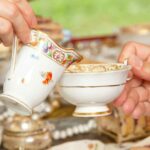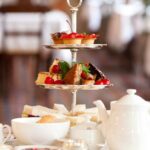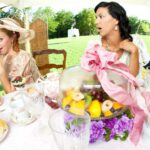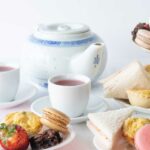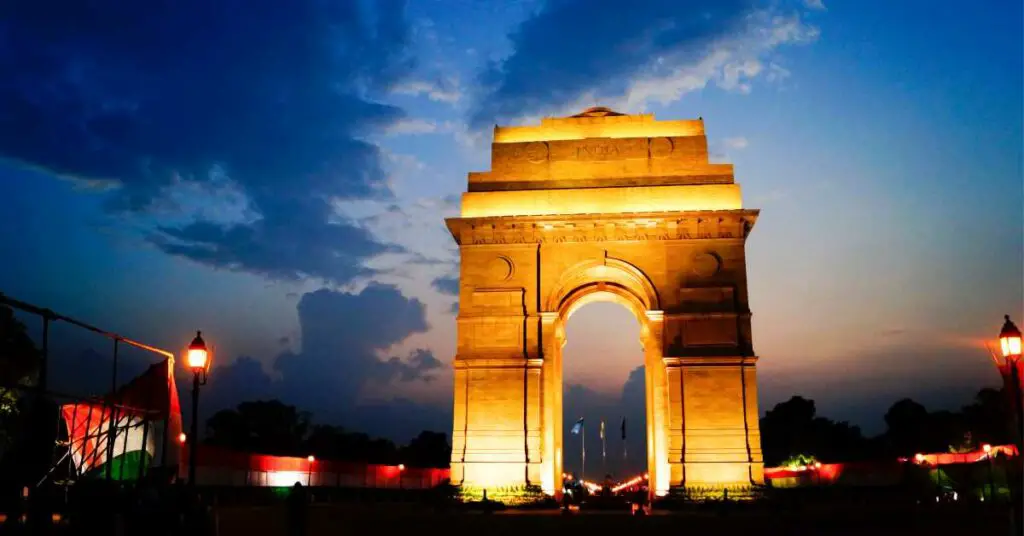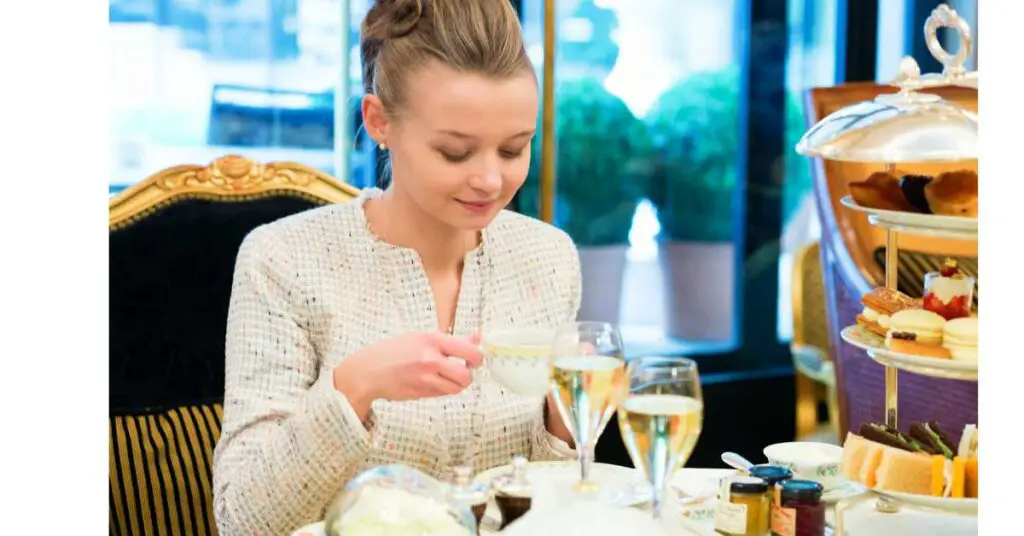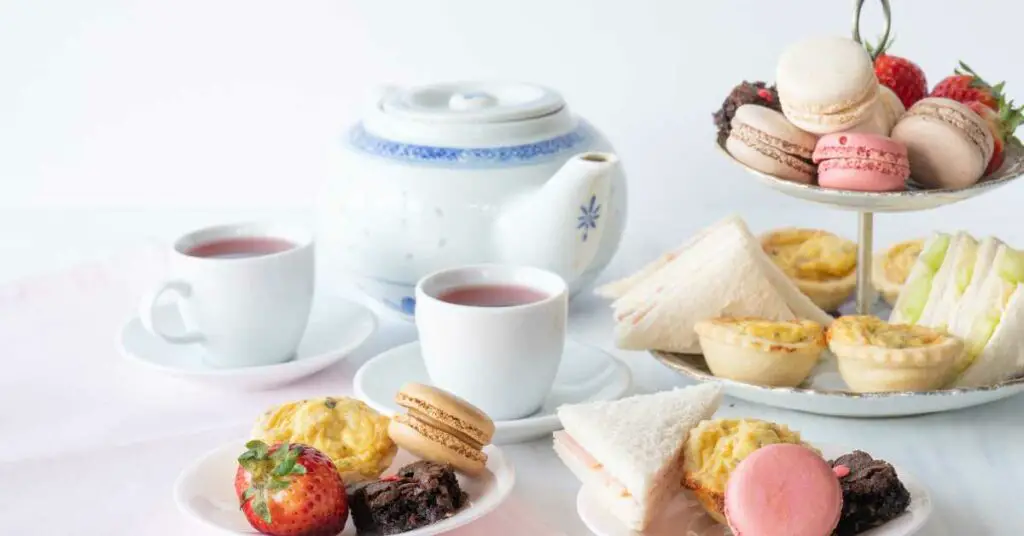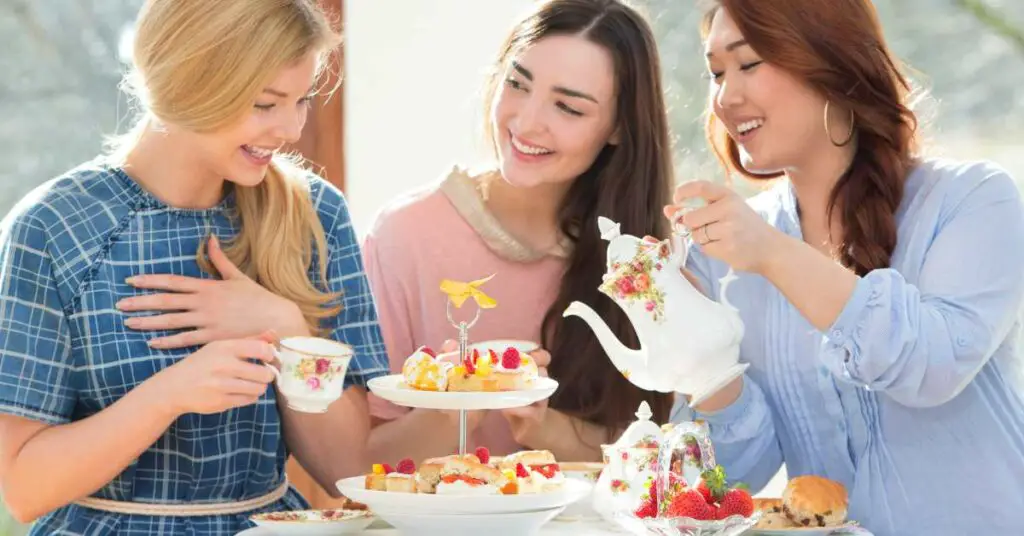Ah, the delightful dance between teacups and saucers, the enchanting aroma of freshly brewed tea, and a spread of tantalizing treats that could make even the Queen crack a smile – welcome to the enchanting world of English High Tea! 🍵✨
English High Tea is a sophisticated culinary tradition that blends tea and hearty fare. Unlike its dainty cousin, Afternoon Tea, High Tea features substantial dishes like meats, breads, and sweets, creating a satisfying and sociable dining experience.
Picture this: an elegant affair that’s neither too highfalutin nor too low-key. It’s like the Goldilocks of tea traditions—just right. But hold on a minute; before you imagine stuffy parlors and monocles, let’s set the record straight.
English High Tea isn’t just for the snooty elites or characters in period dramas. It’s a cultural gem that’s been brewing for centuries, and trust me, it’s got more flavor than a teapot at a tea party.
In this journey through the fragrant hills of tradition, we’ll unravel the mystery behind High Tea’s origins, clear up the confusion between High Tea and its posh cousin Afternoon Tea, and even spill the tea on proper High Tea etiquette.
So, whether you’re a tea aficionado or a curious sipper, buckle up (but gently, so you don’t spill your cuppa), because we’re about to embark on a tea-terrific adventure that will leave you steeped in awe. Let’s dive in, shall we? 🍰
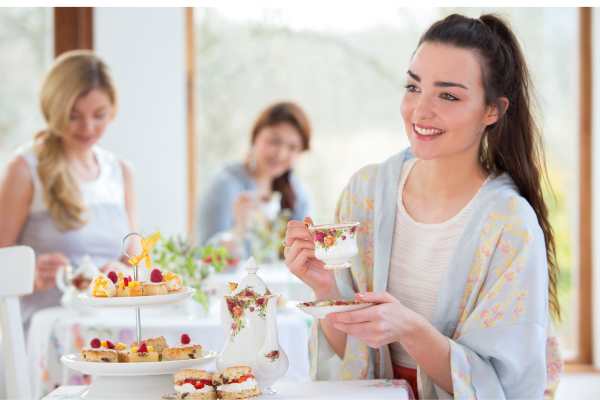
The Elements of an English High Tea
Imagine a scene where elegance meets hearty indulgence, where delicate china gleams under the soft glow of chandeliers, and the air carries whispers of anticipation. This is the enchanting setting of an English High Tea, where every element plays a part in crafting a memorable experience.
The Role of Fine China and Tableware
It’s no secret that presentation is key in the world of High Tea. Fine bone china, intricately designed teapots, and dainty cups with saucers are the stars of the show.
These vessels aren’t just for holding tea; they’re a canvas for showcasing the rich hues of your brew and adding a touch of sophistication to the affair.
The clinking of teaspoons against porcelain creates a symphony of refinement, inviting guests to partake in a timeless ritual.
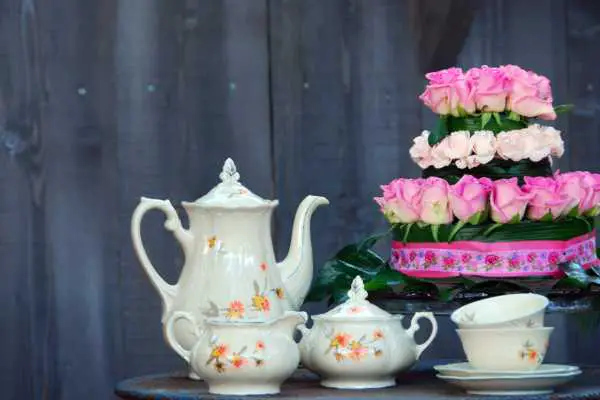
Delectable Treats: Savories and Sweets Galore
Prepare to be tantalized by a parade of flavors that dance between savory and sweet. High Tea isn’t just about delicate finger sandwiches and dainty pastries; it’s a feast that balances heartiness with elegance.
Picture savory quiches, succulent meats, buttery scones with clotted cream, and an array of divine desserts that could tempt even the most disciplined taste buds.
The beauty of High Tea lies in its variety. Each morsel is a masterpiece, carefully curated to offer a tapestry of tastes and textures. From cucumber and smoked salmon sandwiches to decadent éclairs, every bite is a nod to tradition and a celebration of culinary craftsmanship.
In the next section, we’ll dive into the artistry of selecting and brewing the perfect tea to complement this sumptuous spread. So, if your taste buds are tingling and you’re ready to sip and savor, let’s move on to the delightful world of tea selection and preparation.
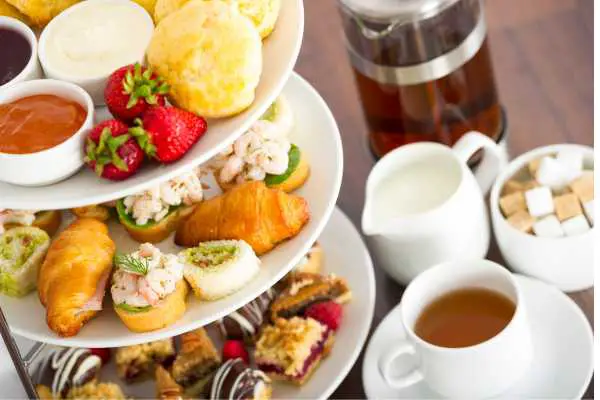
Unraveling the Name: The Story Behind “High Tea”
Ever wondered why it’s called “High Tea”? The answer, surprisingly, lies not in lofty ideals but in practicality.
The term “high” doesn’t refer to elegance; rather, it harks back to the height of the table.
“High Tea” originated as a heartier meal for the working class, enjoyed at taller, more convenient tables.
This simple twist in terminology showcases how history’s threads are woven into the fabric of tradition. So, while the name may evoke images of sophistication, its roots remind us of the down-to-earth origins that make English High Tea a charming blend of history and refinement.
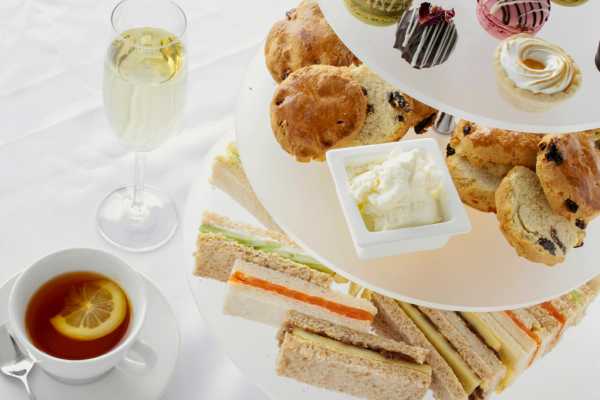
Distinguishing English High Tea from Other Tea Traditions
Tea, that charming elixir that unites cultures and time periods, has birthed various traditions around the world. Among these, English High Tea stands out as a regal yet approachable affair, often confused with its genteel relative, Afternoon Tea. Let’s unravel the nuances and draw the fine line between these tea-time companions.
Clarifying the Difference between High Tea and Afternoon Tea
While the terms might sound interchangeable, high Tea and afternoon Tea couldn’t be more distinct. Afternoon Tea, with its dainty cups, cucumber sandwiches, and pastel cakes, caters to the leisurely afternoon cravings of the social elite.
In contrast, High Tea emerges from the heart of the working class, combining tea with substantial fare to refuel after a long day.
High Tea is a hearty affair, occurring later in the day – think early evening – and often replacing dinner for the working class. It’s less about frills and more about sustenance, featuring heartier dishes like pies, meats, and baked goods.
So, the next time you’re tempted to raise your pinky while reaching for a meat pie, remember that you might just be partaking in a bit of High Tea history.
Exploring High Tea vs. Low Tea: A Cultural Contrast
Another common misconception is the interchangeability of “High Tea” and “Low Tea.” Here’s the tea on that: “Low Tea” isn’t the opposite of High Tea, nor does it involve sitting on tiny chairs.
Instead, “Low Tea” is the historical term for what we now call Afternoon Tea. The “low” refers to the low dining tables on which the tea was served, showcasing the elegance of the upper class.
With this clarity on the distinctions, we’re ready to dive into the heartwarming world of English High Tea.
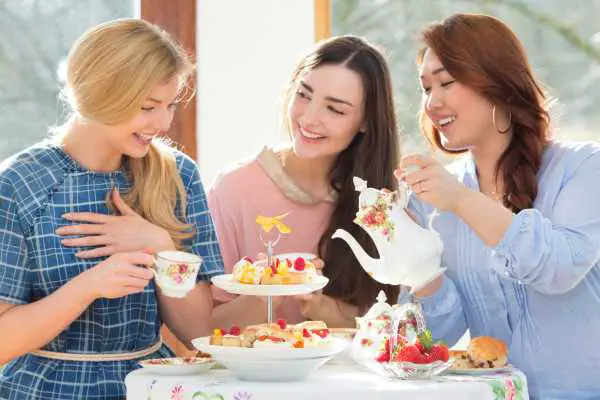
The Timing of English High Tea: Unveiling Tradition’s Enchanted Hour
In the tapestry of cherished traditions, the unveiling of English High Tea is akin to a carefully orchestrated performance, where the stage is set for an enchanting experience. This illustrious ritual graces the table at a designated hour, like a gracious host extending an invitation to a world of elegance and indulgence.
As the sun dips below the horizon and the shadows grow longer, an aura of anticipation builds.
English High Tea traditionally finds its place during the late afternoon or early evening, marking a harmonious transition between the activities of the day and the contemplative moments of the evening.
It offers a chance to unwind and partake in a sensory journey where the soothing notes of steeping tea and the symphony of flavors entwine.
This carefully chosen timing, like a brushstroke on a masterpiece, adds to the allure of English High Tea. It signals not just a culinary delight, but a pause in time—an opportunity to embrace the art of tea, the company of loved ones, and the grace of tradition in a single, harmonious sip.
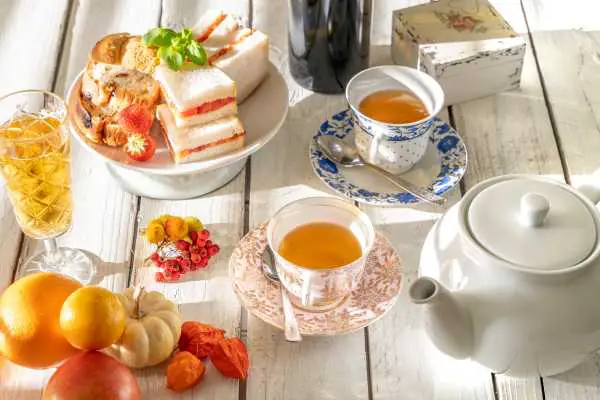
Frequently Asked Questions
Do British people still have high tea?
Certainly! While high tea has evolved over time, it remains a cherished tradition in British culture. Today, it’s often enjoyed as an elegant and indulgent experience, both in traditional settings and modern adaptations, keeping its charm alive.
Is A high tea a buffet?
High tea is not typically a buffet. It’s a sit-down affair where a variety of savory and sweet treats, along with tea, are served on tiered stands or plates. The focus is on elegance, presentation, and savoring each element.
What is a dinner lady called in the UK?
In the UK, a dinner lady is often referred to as a “school dinner supervisor” or “lunchtime supervisor.” They play a vital role in overseeing students during lunch breaks, maintaining order, and assisting with meal service in schools.

